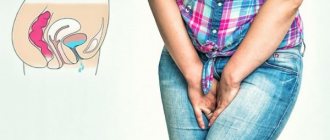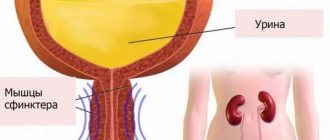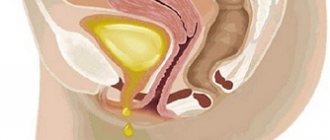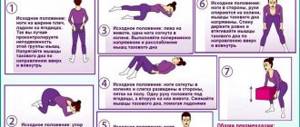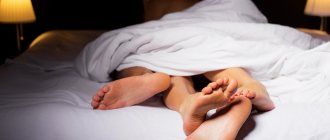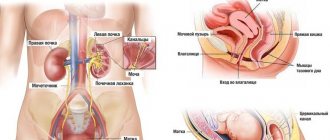Usually, such a problem as urine leakage while jumping on a trampoline or skipping rope occurs in women. Intra-abdominal pressure rises sharply from the load, and involuntary release of fluid from the bladder occurs. The risk of developing pathology in women is associated with the number of births. According to statistics, it turns out that 55% of women who gave birth repeatedly experienced incontinence.
Urinary incontinence may occur when jumping
Causes of urinary incontinence when jumping
With stress incontinence, urine is released during physical activity, without preliminary urges. Patients note the manifestation of urinary incontinence syndrome when jumping on a trampoline, skipping rope, running, severe coughing or sneezing.
The main reason that involuntary urination occurs when jumping is weakness of the pelvic floor muscles and impaired conduction of nerve impulses. It is believed that representatives of the fairer sex are more susceptible to violations.
Urinary incontinence in women during physical activity during pregnancy is associated with increased pressure of the uterus on the pelvic area. Difficulties often arise when carrying a large fetus.
Problems in the postpartum period can occur due to a difficult birth, when the muscles are stretched more than usual.
In addition, urinary incontinence when jumping on a trampoline or skipping rope, or running is associated with:
- menopause in women;
- gynecological and urological pathologies;
- hormonal changes;
- diseases of the respiratory system;
- great physical activity;
- stool disorders;
- obesity;
- surgeries on the genitourinary system;
- stress;
- prostate adenoma in men;
- Parkinson's disease or stroke;
- taking certain medications;
- injury to the pelvic organs;
- abnormalities in the development of the urinary system;
- mental disorders.
Patients with a genetic predisposition are more likely to suffer from this syndrome.
Causes and development factors of urinary incontinence syndrome
Stress incontinence is a syndrome in which urine is released during physical exertion. This usually occurs when running, jumping on a trampoline or jumping rope, and also includes sneezing and coughing.
A characteristic feature of this type of enuresis is the fact that a person does not feel the urge to urinate.
The main reason why this problem occurs in women is the weakening of the muscles of the urethra.
Almost always this happens due to a strong load on the pelvic floor, usually this is pregnancy and its accompanying difficulties, for example:
- large fruit;
- muscle stretching during labor;
- pressure on the uterus.
Additional factors include:
- gynecological operations;
- menopause;
- genetic factor;
- pathologies of the respiratory system;
- hard physical labor;
- constipation;
- excess weight;
- psychical deviations;
- taking certain medications;
- anatomical features.
Very often, incontinence is psychogenic in nature. It is necessary to visit a doctor even with the most minor manifestations of pathology.
Mechanism of development of the disorder
Involuntary urination in women and men during jumping, running, and when doing strength sports is called stress incontinence. In this case, the patient does not feel the urge to go to the toilet.
Emptying the bladder is associated with an increase in intra-abdominal pressure.
It often occurs in women during pregnancy, when the uterus enlarges and descends, squeezing all the organs of the abdominal cavity.
After childbirth, urinary incontinence when jumping is possible for about another 2-3 weeks, since the muscles need time to recover after natural stretching at the birth of the baby.
The act of urination is controlled by the nervous system. When the bladder is empty, the urethral sphincters are closed, and the muscular wall of the bladder is in a relaxed state.
As the organ fills, the pressure on the walls increases, and the nerve fibers located in them send a signal to the cerebral cortex.
Having received the feedback, the detrusor contracts, the sphincter relaxes, and urine flows out of the bladder through the urinary canal.
Incontinence can occur when jumping when at least one of the mechanisms gets out of control.
If the supporting muscular-ligamentous structure is weakened, the tone of the urethra increases, the closing function of the sphincter of the urinary canal is disrupted, and the transmission of nerve impulses fails, then urine is not retained in the bladder and leaks out.
Description of the problem
Urinary incontinence in women and men is the process of spontaneous leakage of urine when emptying the bladder cannot be consciously regulated. This is not a separate disease, but rather a consequence of another pathology.
Women are more likely to experience involuntary urination. Their pelvic floor muscles are weaker than those of men, and there are significantly more risk factors. If urine leaks while jumping rope or trampoline, laughing or sneezing, or lifting weights, then this type of pathology in medicine is called stress or stress incontinence. Any load and tension in the abdominal cavity can provoke embarrassment. A distinctive feature of stress enuresis is the absence of the urge to urinate.
The amount of urine can be so small that women may confuse it with vaginal discharge. In this case, you must seek help from a qualified specialist, otherwise an incorrect diagnosis will be made and the wrong treatment will be prescribed.
Spontaneous leakage of urine during physical activity and jumping is associated with:
- damage to the nerve endings of the genitourinary system,
- low tone of the muscles that are responsible for urination.
The risk of developing the disease increases under the influence of certain factors:
- heavy weight,
- constant stress,
- hereditary anatomical abnormalities,
- difficult pregnancy
- large fruit,
- prostate adenoma,
- multiple or complicated births,
- hormonal imbalances in the body,
- pathologies of the nervous system (stroke, Parkinson’s, etc.),
- surgeries on the genitourinary system,
- trauma, pelvic organs.
Enuresis most often occurs during pregnancy or after childbirth. This occurs due to constipation and uterine pressure, especially when the fetus is large. During childbirth, the muscles of the perineum are greatly stretched, which can subsequently lead to uncontrolled loss of urine. Difficult childbirth, with the intervention of an obstetrician, can aggravate the situation.
Diagnostics
If involuntary urination occurs during jumping, the doctor will prescribe the following to determine the cause:
- general analysis of urine and blood;
- Ultrasound of the urinary system. Allows you to assess their condition, identify tumors, stones, dysplasia and other damage and disorders.
- urodynamic study. Provides information about the functioning of the bladder.
All patients need to keep a urination diary, where they need to record the time of emptying, the amount of urine, the nature of the stream, and the volume of liquid drunk per day.
Women need to visit a gynecologist.
Diagnostic methods
The examination is carried out not only to identify the disease, but also to distinguish this type of enuresis from others. The therapeutic course chosen by the doctor will depend on this. The patient must undergo the following studies:
- urine tests, including Nechiporenko and general tests;
- Ultrasound of the bladder;
- keep a urination diary, the data of which should be shown to the doctor.
It is advisable that the urologist examine the patient in a gynecological chair. This is the only way to visually see and additionally confirm the fact of the disease that appears during stress. The specialist should also evaluate the genitals for prolapse, and if it is detected, indicate the degree.
It is very important that the doctor conducts examinations and determines whether the patient has any contraindications for the chosen treatment. It is advisable to simultaneously visit a gynecologist to rule out an inflammatory process in the genitourinary organs or other serious pathology.
Treatment methods
When treating urinary incontinence in women and men when jumping, therapy is selected individually. Treatment must be comprehensive, since the use of medications will not bring the desired effect without muscle strengthening exercises.
To normalize the urination process and prevent involuntary urination when jumping, women and men may be prescribed:
- diet. Recommended for overweight people who have problems with urine output related to their weight;
- taking medications;
- psychotherapy to stabilize the psychological state;
- therapeutic exercises to strengthen muscles;
- physiotherapy;
- surgery. The operation is performed only if there is no effect from conservative therapy.
Medications are prescribed depending on the cause of incontinence.
- If infection or inflammation is detected, then anti-inflammatory drugs and antibiotics are needed.
- If there is a hormonal imbalance, take medications that normalize hormonal levels.
- If the illness is psychogenic, antidepressants may be required.
In addition, all patients with enuresis are prescribed anticholinergic drugs to relieve involuntary muscle contractions.
During treatment, you need to control the amount of fluid you drink and monitor your diet, avoiding diuretic foods and drinks.
Physiotherapy is usually combined with gymnastics and psychotherapy. Electromagnetic procedures, electrophoresis, vibration massage, diadynamometry, and galvanotherapy are popular.
The duration of the course depends on the age, condition of the patient, the nature of the underlying disease or disorder.
Bladder training is very useful, in which you need to go to the toilet on a schedule, and when an unwanted urge to empty occurs, you need to restrain it.
Incontinence surgery helps provide additional support using a special prolene tape. It is laid under the urethra.
For the best effect after surgery, it is necessary to stop carrying heavy objects and temporarily stop intimate life. Usually the operation is performed no earlier than a year from the start of conservative treatment.
Less often they resort to urethrocystocervicopexy, when the neck of the bladder and the organ itself are fixed in the correct position.
If incontinence is associated with uterine prolapse, then treatment to correct genital prolapse is required before urological treatment.
In women, a plastic or silicone pessary may be installed. When inserted into the vagina, it creates pressure on the walls of the urinary canal, which prevents urine from flowing out spontaneously.
Pessaries are mushroom-shaped, cubic, urethral, cup-shaped. Also, vaginal rings are divided according to the duration of wear.
There are products that are installed for a long time, while others are inserted for a short period, for example, before physical activity.
In order to prevent odor and discomfort from urinary incontinence, patients are advised to wear special urological panties or use pads.
Traditional medicine is used only after consultation with a doctor. Suitable teas include lingonberry, St. John's wort, centaury, nettle, marshmallow, and yarrow.
Pregnant women are prescribed a mixture of St. John's wort, burdock and hernia. A decoction of plantain seeds helps men well.
Diagnosis of women with stress urinary incontinence
For the examination to be successful and the treatment to be effective, the woman must completely trust the attending physician. Patients should not be embarrassed by this problem, because this phenomenon is quite common. Before starting diagnostic measures, the patient must fully describe his feelings and concerns. The effectiveness of treatment depends on the exact description of the symptoms.
To begin with, the patient fills out a special questionnaire in which she describes:
- how and in what situations incontinence manifests itself;
- previous pathologies;
- previous operations;
- where does he work;
- Does he do physical exercise?
After the questionnaire is filled out, the doctor issues a special diary. In the diary, the patient must indicate:
- at what time and in what volume does he drink water, coffee, tea or any other drink;
- time of urination;
- volume of urine excreted;
- urine color.
It is imperative to take into account night time, this will allow the doctor to make a more accurate diagnosis. Also, the diary should have a separate column. In it, the patient must record the time of incontinence and the volume of urine leaking. three days later, the doctor and the patient study all the data, and after that a series of diagnostic measures are prescribed.
The next stage is an examination by a gynecologist. The specialist will determine the condition and tone of the pelvic muscles. Then the patient is sent to a neurologist, who will determine the integrity of the reflex features. The neurologist may conduct several experiments. To do this, the woman drinks a lot of water so that the bladder is as full as possible and is asked to cough or strain. If women really have serious problems, then during this period the doctor will notice urine leakage. These are the main diagnostic methods that are prescribed to all patients with this problem. Further diagnostics are prescribed individually for each patient. Typically this is:
- general urine analysis;
- blood biochemistry;
- Ultrasound examination of the bladder and kidneys. In this way, the doctor can determine the amount of urine after going to the toilet (residual urine).
The above diagnostic methods allow specialists to exclude serious urological pathologies.
Additionally, the doctor may prescribe:
- cystourethroscopy - diagnosis of the inner surface of the bladder;
- X-ray of the bladder.
These two diagnostic methods are prescribed only when there are serious indications.
At the end, doctors prescribe a urodynamic examination using a special device (uroflowmetry). The patient must urinate into a special hole in the device. In this way, the doctor determines the speed of urine movement and the time of the urination process.
A set of exercises for urinary incontinence
Having figured out why involuntary urination occurs while jumping rope, you can use a special set of exercises to achieve control over the process of urination.
Kegel gymnastics is recognized as the most effective method of strengthening muscles in the intimate area. You need to do the exercises every day, several approaches, for at least 3-4 months in a row.
Having taken a lying position, you should tense the muscles of the perineum for 3-5 seconds while inhaling, and relax while exhaling. You need to repeat the exercise 15-20 times, daily the amount is increased by 5-10 times until it reaches 100-200.
It is necessary to contract the muscles that are involved in holding back urination; the legs and buttocks are not involved.
In addition to Kegel exercises, there are others that are no less useful:
- Starting position: lying on your back. Arms and legs rise for 5-7 seconds, then smoothly lower. You need to breathe with your stomach.
- While standing, the ball is held between the knees. Squeeze the ball tightly, straining the perineum, hold the tension for 10 seconds, relax.
- Sitting on the floor or on a chair. The legs are crossed, then spread, while the pelvic muscles work.
- Lying on your side. The free leg is bent and pulled towards the chest. Then change sides and repeat with the other leg.
- Lying on your stomach. Alternate leg swings are performed.
- Lying on your back, legs bent at the knees. Smoothly lower your legs to the floor and again take the starting position, pulling your knees to your chest.
Among the well-known exercises, abdominal swings, squats, and bends are useful.
Preventive measures
To minimize the risk of disease or relapse, you need to:
- Avoid lifting or carrying heavy objects.
- Quit smoking and alcohol.
- Stabilize weight.
- Avoid running, jumping, and strenuous sports. It is better to replace them with light exercises, swimming, walking.
- Promptly treat all inflammatory and infectious pathologies of the genitourinary system.
- Avoid diuretic drinks and foods.
- Monitor bowel regularity.
- Avoid taking medications with a diuretic effect.
- Undergo preventive examinations of the genitourinary system annually.
There is no point in starting the disease; when the first symptoms appear, you should consult a doctor. Timely treatment allows you to get rid of the problem forever.
Usually, such a problem as urine leakage while jumping on a trampoline or skipping rope occurs in women. Intra-abdominal pressure rises sharply from the load, and involuntary release of fluid from the bladder occurs. The risk of developing pathology in women is associated with the number of births. According to statistics, it turns out that 55% of women who gave birth repeatedly experienced incontinence.
How is urinary incontinence treated?
The extreme prevalence of incontinence among the population, especially older people, and the enormous social significance of the pathology require the use of effective methods of therapy. Their arsenal is quite wide: from therapeutic exercises and prescription of medications to traumatic and expensive surgical interventions. Their choice is made individually, but it is worth noting that in a rare patient the effectiveness of such therapy methods reaches 100%.
Therefore, since the end of the last century, the demand for such a modern method as the installation of special sling systems in an operative but low-traumatic way has been growing. More information about which doctor you should contact if signs of urinary incontinence appear, what treatment methods exist and how effective they are can be found in this article.
Modern medical capabilities make it possible in most cases to completely get rid of this problem, which provides an absolutely favorable prognosis. It is important not to delay seeking help by constantly using pads or diapers, but to seek medical advice as quickly as possible.
Reasons for development
The disease affects people of all ages, regardless of the quality of life and conditions of activity. Although, some relationship can be traced between physical activity closer to retirement age and the appearance of pathology. There are many provoking factors, so uncontrolled urination is considered as a sign of some illness, and it begins to be treated after diagnosis.
The main reasons are as follows:
- incorrect position of the pelvic organs, sprained ligaments, fascia, decreased sensitivity. This happens after repeated or complicated childbirth, with genitourinary infections, obesity as a consequence of surgery, heavy loads, strength sports;
- hormonal changes. The reason is relevant for women over 45 years old. The number of estrogen drops, dystrophic changes occur in internal organs, including the urinary system;
- problem with the nervous regulation of the ureter, bladder. The disease occurs after diseases of a neurological nature, lesions due to infectious diseases (myelitis, meningitis), neoplasms, spinal cord and brain injuries, as well as stroke, sclerosis;
- psychosomatics. The condition is associated with stress due to work issues, financial disadvantage, problems at home and other irritants.
The listed factors threaten the functionality of the detrusor and bladder muscles.
Types of incontinence
Urination is carried out with the participation of the bladder and urethral canal. The process of the nervous system, including the cerebral cortex, is regulated. As the bladder fills, the detrusor is in a relaxed state; as soon as the pressure inside exceeds the pressure in the urethra, the nerve fibers of the walls of the organ are excited.
The urge to empty the bladder appears, a signal is sent from the cerebral cortex, as a result of which the detrusor muscle contracts, the urinary sphincter relaxes, and urine flows out. Normally, the process of urination occurs due to the joint work of three mechanisms:
- Closing ability of the urinary canal, bladder.
- Stability of the anatomy of the genitourinary diaphragm.
- Physiological parameter of the innervation of the listed organs.
If one of the mechanisms does not work, involuntary leakage of urine occurs. Taking into account the cause of incontinence, types of incontinence are distinguished:
- stress (from tension) is the most common type;
- urgent (imperative);
- mixed - a combination of the two listed types;
- transient;
- from overflow.
Urologists identify stress and mixed incontinence, and rarely urgent incontinence.
Stress incontinence
Approximately 50% of cases of incontinence are of the stress type and are diagnosed in women of mature and premenopausal age. With this form of pathology, urine flows out even without urge and regardless of the fullness of the bladder. Confusion occurs when coughing, sneezing, laughing loudly, during running, jumping on a trampoline, or lifting weights.
The prevailing number of women among the total number of patients with stress incontinence is simple to explain - difficult childbirth negatively affects the pelvic floor, urethra and urinary tract. At risk are women who had perineal ruptures during childbirth and used obstetric devices. The risk of enuresis also increases before menopause approaches, when hormonal levels change.
Men are less likely to suffer from stress incontinence. The disease is provoked by age-related negative changes in internal systems, surgical operations, and hard work in adulthood and retirement age. Smokers are at risk. A constant cough has a particularly negative effect on the urinary and urethral sphincter.
There are 3 degrees of stress incontinence:
- Urine is released minimally from strong stress.
- Enuresis occurs during moderate exercise.
- Uncontrolled urine output occurs during rest and slow walking.
Types of urine leakage
Modern medicine has divided urinary incontinence into six types:
- Stressful. Urine is released involuntarily during exercise, sneezing, coughing, and so on. This is caused by a sharp increase in pressure in the peritoneum. Very often, incontinence is diagnosed in athletes who practice trampolining and running.
- Urgentny. Leakage is caused by a sudden, strong and unbearable urge.
- Reflex. The body develops a reflex to urinate at the sound of water or screaming.
- Involuntary.
- Night. This type of incontinence is otherwise called enuresis and is more often diagnosed in children.
- The ischuria of paradox.
Stress incontinence is more common in women. This is exactly what we will talk about.
Treatment for urinary incontinence
The success of therapy depends on the identified cause. This becomes the basis for selecting a set of activities. The doctor prescribes medications for infectious and inflammatory diseases, and for menopause, prescribes hormones. You need to follow your doctor’s recommendations, report changes in your condition, and come for check-ups.
During therapy, it is advisable to adhere to a diet, drink a limited amount of water, and visit the restroom on a schedule. Electromagnetic stimulation and exercises are prescribed. The result will not appear immediately, but after about a year. Urine leakage from jumping is difficult to treat with medications, since the cause lies in the anatomical structure of the organs.
The exception is enuresis caused by hormonal changes. This condition is corrected by the use of hormonal agents - they are lubricated in the vagina and inserted inside. The same applies to enuresis from excess weight - adjusting your diet and losing weight will help you get rid of the problem.
How to treat urine leakage in women
What to do if a girl involuntarily leaks urine is described in detail on a separate page - you can open it by clicking on the link picture at the bottom of the page. Briefly, the essence of the issue is as follows. Since the main reason why a girl peed herself while laughing, sneezing, jogging, jumping and squatting, and other similar situations lies in the weakening and impairment of the muscles of the pelvis and perineum, treatment should be aimed at correcting these issues.
✅ The following can play a positive role in solving this problem:
· Vaginal devices (simulators) to strengthen intimate muscles; · Injections of fillers into specified points; · Manual massage of the pelvic organs.
A set of exercises to strengthen muscles
Kegel exercises help strengthen the necessary muscle groups. You can't see them, but you can feel them. To calculate the muscles, you should pause the process of urination for 2 seconds. Those muscles that have been tensed need to be trained.
Gymnastics consists of consistently tensing and relaxing the muscles of the perineum until the number of contractions reaches 100-200 times. Over time, weights are added to the gymnastics - cones, exercise machines, jade balls.
Other exercises that strengthen muscle tone are squats, abdominal swings, and body bends. An effective exercise to do at home is to squeeze a tennis ball high between the inner surface of your legs. You need to move around the room with it. You can learn more about these and other exercises from your doctor.
Special gymnastics
The main set of movements is aimed at restoring and strengthening the pelvic muscle group. The table below shows the most effective exercises that help strengthen muscle tone.
| Which organ should I work on? | What needs to be done? |
| While lying down, you need to strain the upper urinary opening, which can be felt when holding back urine. | You need to inhale, exhale, and while holding your breath, strain the channel. Start with 10 repetitions, gradually working up to 100. |
| The lower urinary channel can be felt when you try to interrupt the act of urination. | Inhale, exhale, and while holding the breath, the channel tenses and relaxes. Start with 10 repetitions, gradually working up to 100. |
| Contraction and relaxation of the vaginal opening. | Start with 10 repetitions, gradually working up to 100. |
| Tension and relaxation of the anus. | Start with 10 repetitions, gradually working up to 100. |
Having learned to work the valve muscles one by one, you can move on to performing the entire set of exercises. If you can’t fix the sphincters separately, don’t despair. Even the slightest movements have a beneficial effect on muscle tone.
Urinary incontinence is a harmless disease, but it requires special attention. This pathology will never disappear on its own. Therefore, consultation with a doctor and professional therapy are necessary, because only an experienced specialist can lead to a complete recovery. You shouldn’t isolate yourself from the outside world and traumatize your psyche.
Incontinence pads for women
The problem of enuresis forces women to change their lifestyle and use hygienic devices that can absorb urine. Pads for menstruation are not suitable, since even “night pads” are not able to eliminate the unpleasant odor or absorb such a volume of liquid.
Long-term use of pads causes diaper rash and irritation. Therefore, with uncontrolled urination, you need to use urological pads. They are larger than usual in size, and the thickness is the same. The benefits of hygiene products include:
- the liquid is quickly absorbed;
- the smell of urine is neutralized;
- the surface of the gasket remains dry;
- when worn for a long time, they do not cause the growth of bacteria;
- anatomical shape eliminates the risk of leaks.
Thanks to urological pads, you can improve the quality of life and reduce the amount of stress from pathology. Such remedies are intended to alleviate pathology, but do not cure. It is important to see a doctor in time. The specialist will select comprehensive therapy, including exercises, physical therapy, and medications (antidepressants).
You need to choose urological pads based on the main parameter - the ability to absorb moisture. Based on this criterion, products are divided into the following types:
- up to 50 ml – at the onset of the disease;
- from 50 to 100 ml – for mild enuresis;
- from 100 to 200 ml – for the middle stage of pathology;
- more than 200 ml – in case of severe pathological condition.
The choice on the ability to absorb moisture concerns the volume of urine discharge, not a single one. Doctors recommend that patients with severe enuresis wear tight panties. They will tightly fix the urological pads and will not allow them to move around the body.
To summarize, it can be noted that jumping incontinence is a delicate problem. Often women wear pads, masking the problem, but without consulting a doctor. You need to put aside false modesty and entrust your health to a specialist. He will prescribe a diagnosis, identify the cause of enuresis, and select adequate treatment. This is the only way to count on a successful recovery or reduction of unpleasant symptoms.
There are pathologies that the patient is ashamed to admit. It's easy to imagine the confusion and pain of a sexy, beautiful woman who becomes incontinent while jumping rope or doing aerobics. Let’s try to figure out why such a delicate situation arises and how to avoid it.
Urine leakage during jumping as a type of stress incontinence
Urinary incontinence during physical activity is more common in women. Experts associate this with the anatomical features of the structure of the urinary tract, hormonal changes, as well as with the fulfillment of the main purpose of the fair half - the birth of babies. Doctors classify unconscious incontinence (urinary incontinence) as a result of increased intra-abdominal pressure as a stress type, in contrast to the urgent type, when a sudden excessive signal to empty the bladder occurs - the patient simply does not have time to reach the ladies' room.
Manifestations of pathologists
The occurrence of this pathology significantly poisons life. Urinary incontinence during jumping rope, exercise in the gym, lifting weights, coughing, sneezing, laughing, puts the patient in an awkward position. Forces you to give up small joys, is in constant anticipation of an unpleasant event, limits laughter, stops meetings and dates.
Development mechanism
Urinary incontinence when running and jumping occurs suddenly, without the urge to urinate. Distinctive features of this type of incontinence:
- release of bladder contents due to increased intra-abdominal pressure;
- the muscle wall of the bladder (detrusor) is relaxed;
- the urethral sphincter cannot resist the flow of fluid.
Normally, the tendon apparatus creates compression on the urethra, which inhibits leakage. When the supporting framework of connective tissue is weakened and the amount of collagen fibers in it is reduced, even minimal load causes a malfunction of the urethra.
Provoking factors and risk group
A woman faces the problem of urinary incontinence when jumping rope or trampoline as a result of difficult childbirth or surgical interventions for gynecological diseases. A man – after complex manipulations on the urethra and prostate gland.
Risk factors include:
- hereditary predisposition;
- diseases of the nervous system;
- hormonal imbalance;
- diseases of the abdominal cavity and pelvic organs;
- injuries;
- smoking;
- excess body weight;
Complicated obstetric history (episiotomy during childbirth, extraction of the baby using forceps, a vacuum extractor, heavy weight of the newborn, ruptures of the perineum, pelvic floor muscles) also contributes to a decrease in the function of the tendon apparatus of the urethra and provokes urinary incontinence in women during jumping or during any other physical activity.
The stronger sex may face a problem after a stroke or radiation therapy for prostate cancer.
How to treat pathology
Urinary incontinence when running and jumping is extremely difficult to treat with medication. If we follow the very essence of the disease, it becomes clear that it is impossible to change the existing anatomy and structure of organs with the help of drugs. An exception is enuresis caused by hormonal changes in the female body during menopause. In this case, hormonal agents are prescribed, which must be lubricated or inserted into the vagina and thereby bring the cells and tissues closer to a deficient state. Overweight women can also improve their situation after losing weight.
Mild stress incontinence can be treated by building and strengthening muscle mass in the groin area. This is especially true for women who experience jumping incontinence after childbirth.
The doctor can offer them Kegel exercises, which need to be done daily for 3-5 approaches during the day, and so on for 3 months.
Diagnostic examination
The cause of such an intimate problem as urinary incontinence in women during running and physical activity is at the intersection of two specializations - the genital area and urology. It may be necessary to examine the endocrine and nervous systems, exclude gastroenterological pathologies, and eliminate obesity.
Differential diagnosis of enuresis of various types begins with a thorough history taking. Therefore, you should not be surprised if a specialist starts asking unexpected questions. The doctor needs to clarify the conditions of origin of the delicate situation, the amount of urine excreted, and risk factors. The treatment method depends on this.
- filling out a questionnaire;
- gynecological examination, consultation with a urologist;
- clinical laboratory and bacteriological urine tests;
- Ultrasound of the pelvic organs;
- cystography;
- combined urodynamic study.
Treatment of involuntary leakage of urine when jumping
If a person, having made a jump, finds himself in an unpleasant situation for the first time, it is important not to waste precious time. It's better to seek help as soon as possible. Treatment of urinary incontinence during jumping in women and men is selected individually, depending on the stage of the disease, comorbid conditions, and etiology.
Folk remedies and medicines
Women are prescribed medications that relax the wall, contracting the muscle layer of the bladder neck. If the cause of stress incontinence in a man lies in prostate adenoma, then the urologist will recommend the same medications as for the treatment of prostate hyperplasia.
Traditional medicine recommends teas from medicinal plants: St. John's wort in combination with lingonberry leaves or centaury, infusion of nettle, yarrow, marshmallow root. Herbalists advise pregnant women to brew St. John's wort together with hernia and burdock, and men are offered plantain seeds.
Exercises to strengthen the pelvic muscles
Urinary incontinence when jumping on a trampoline, jumping rope, over a goat, in length is corrected by a complex of therapeutic exercises to strengthen the muscles of the perineum. The exercises were developed by Arnold Kegel for the treatment of women, but the complex also turned out to be effective for diseases of the male urogenital area. It is necessary to alternately relax and tense the muscles that regulate the flow of urine stream for three seconds, up to 10-15 times during urination. Perform this action at least 3 times a day.
You should not neglect other complexes of physical therapy:
- Lying on your back, raise your arms, then your legs. Remain in this position for several seconds, maintaining abdominal breathing.
- Sitting on a chair, alternately cross and spread your legs, while straining your pelvic muscles.
- In a lying position, straighten and smoothly lower your legs bent at the knees, while simultaneously working the muscles of the perineum.
- In a knee-elbow position, place your head on your hands and regulate your breathing.
- Lying on your stomach, raise your pelvis, tensing your muscles.
You can start classes at home with two times a day, gradually increasing to ten.
Physiotherapy
Physiotherapeutic methods such as amplipulse, electrophoresis, treatment with galvanic currents, DDT, and a course of vibromassage have a beneficial effect on the sphincters of the urethra. Only a doctor should prescribe the procedures, and carry them out - a medical worker with special training and an appropriate certificate.
Bladder training using behavioral therapy
Experts refer to the method of behavioral therapy as a set of measures aimed at visiting the toilet according to a schedule.
- Urination schedule.
- Biofeedback is the suppression of an “emergency” urge by contraction of the pelvic floor muscles.
- Strengthening the perineal muscles.
Installation of a pessary in women
For urinary incontinence caused by prolapse of the uterus and vagina, the doctor may recommend the installation of a pessary - a medical device made of silicone or plastic that is inserted into the vagina. By applying pressure to the walls of the urethra, the device prevents urine from leaking out.
Devices are selected strictly individually and require hygiene, thorough medical examination, and regular preventive examinations. There are pessaries for long-term and temporary wear (for example, while a woman is in the gym). The device is first installed by a doctor, and then the patient learns to use it independently.
Urological panties and pads
The modern pharmacological industry produces a variety of options for urological underwear. It is designed to protect the skin from the irritating effects of urine and prevent the spread of unpleasant odors.
There are special panties and pads, both for women and men, that provide the opportunity to jump and run, making the problem completely invisible to others. It is only important to choose the optimal remedy for a particular person. The size of the product and the degree of urinary incontinence matter.
Surgery
There are more than two hundred surgical methods for treating the described pathology, including the use of alloplastic biomaterials. The principle of correction is to create additional support for the urethra and strengthen its wall. Minimally invasive surgical procedures include paraurethral injection of bulk-forming substances.
Andrologists recommend intervention if conservative therapy has not produced results over the course of a year. Deciding to have surgery is always difficult. You should choose a clinic, discuss in detail with your doctor the method of performing the procedure, clarify what complications may arise, and how the postoperative period will proceed.
Consequences of the problem and treatment prognosis
Many patients hesitate to seek medical help, feeling embarrassed, hoping to solve the problem of stress urinary incontinence on their own. The disease progresses, promotes the development of skin and urogenital infections, a person’s quality of life deteriorates, and an unstable psycho-emotional state leads to depression.
You should not suffer, because modern treatment methods are quite effective. Together with an experienced doctor, it is important to select a set of treatment procedures that are optimally suited to a particular patient. In 90% of cases, they are able to permanently relieve an unpleasant symptom.
Preventive measures
The following simple preventive measures, which not all patients actually have the willpower to adhere to, contribute to improving the condition in combination with the treatment:
- Losing excess weight - it has been proven that every extra kilogram increases the risk of developing incontinence by 3%.
- Quitting cigarettes - smokers have a deficiency of vitamin C, impaired tissue microcirculation, increased collagen breakdown, which helps reduce sphincter tone.
- A balanced diet and sufficient water consumption - spicy foods and fluid deficiency provoke irritation of the bladder wall, and straining during constipation increases the risk of urinary incontinence.
- Combating physical inactivity - feasible physical exercise helps strengthen muscles.
- Treatment and monitoring of chronic diseases of the respiratory system, digestion, and cardiovascular system.
It is necessary to clearly orient the patient towards the goal and result, only then can commitment to the implementation of these tips be achieved.



